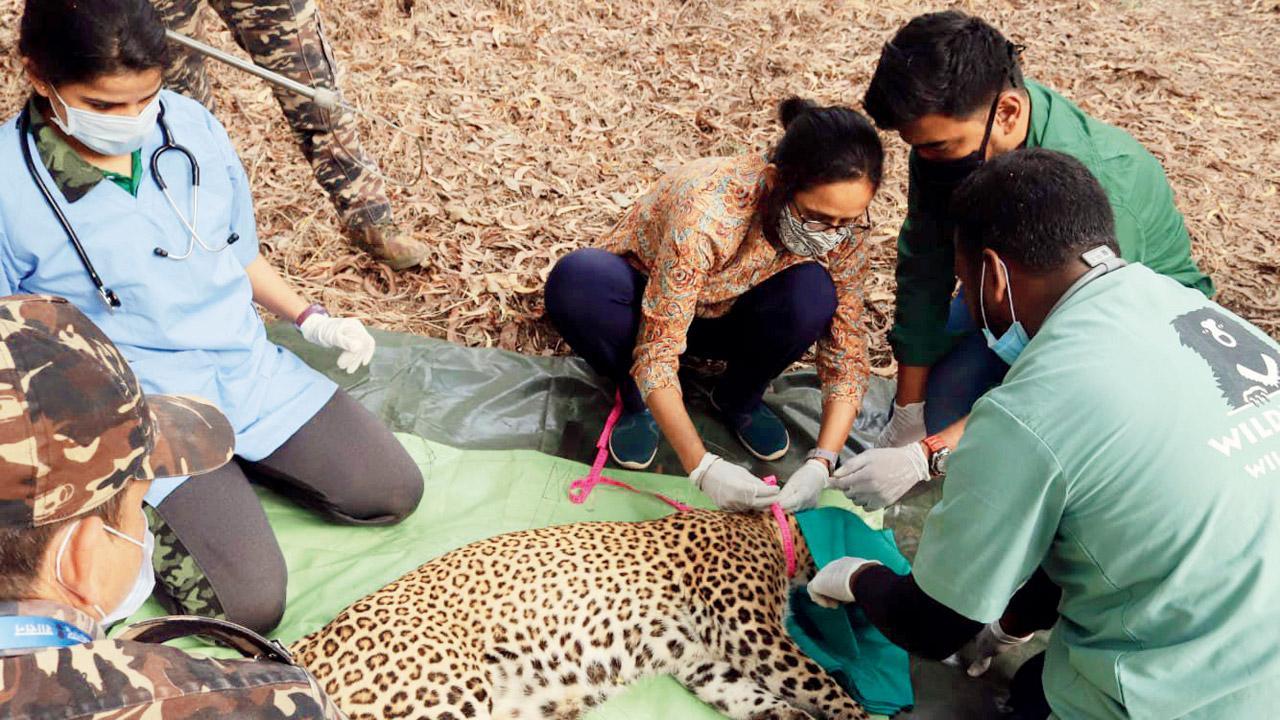Experts say the exercise will give insight into how leopards navigate the urban space

Six-year-old female leopard Kranti has been released into the wild
The Sanjay Gandhi National Park (SGNP) authorities, along with NGO Wildlife Conservation Society (WCS), have radio-collared a female leopard named Kranti, after which it was released back into its natural habitat.
ADVERTISEMENT
SGNP Director and Conservator of Forest (CF) G Mallikarjuna said, “In continuation of our leopard radio-collaring work, on Friday, we successfully radio-collared and released one female leopard named Kranti. We are expecting interesting data on human-leopard interaction through this collared animal. The same exercise will be conducted on two more leopards in the following days.”
Director of NGO Wildlife Conservation Society and biologist Dr Vidya Athreya along with biologist Nikit Surve and his team were present during the collaring process. Veterinarians Dr Nikhil Banger and Dr Rashmi Gokhale lent their expertise too.
Dr Athreya said, “The radio telemetry study on leopards will give us insight into how leopards of Mumbai navigate the urban space. The study will also help the forest department in planning a better conservation strategy.” The six-year-old leopard that was radio-collared is healthy and fit, said authorities. As of now, a total of four leopards have been radio-collared of which a male leopard Maharaja, female leopards Savitri and Kranti have been collared by WCS and SGNP.
A total of five leopards will be strapped with GPS collars which are similar to the one that was fitted on legendary male leopard Ajoba. Three females and two male leopards will be collared in the two-year project. The leopards have been identified from different locations within the park, including some from the periphery to understand their interactions with humans.
04
No. of leopards that have been radio-collared until now in SGNP
 Subscribe today by clicking the link and stay updated with the latest news!" Click here!
Subscribe today by clicking the link and stay updated with the latest news!" Click here!







